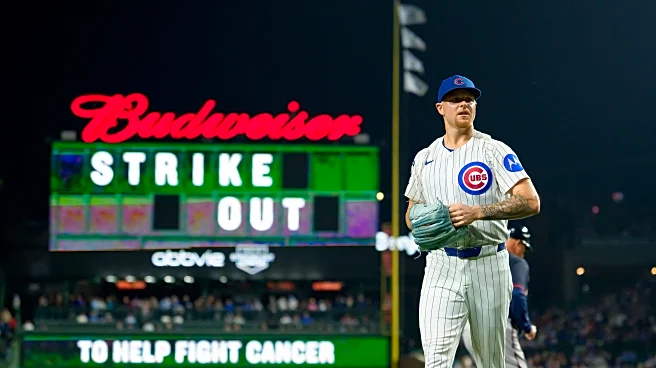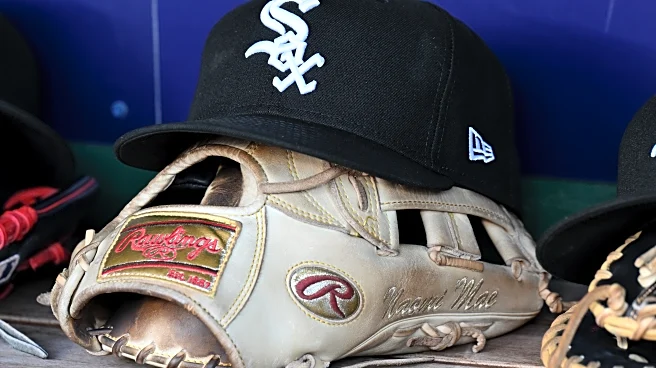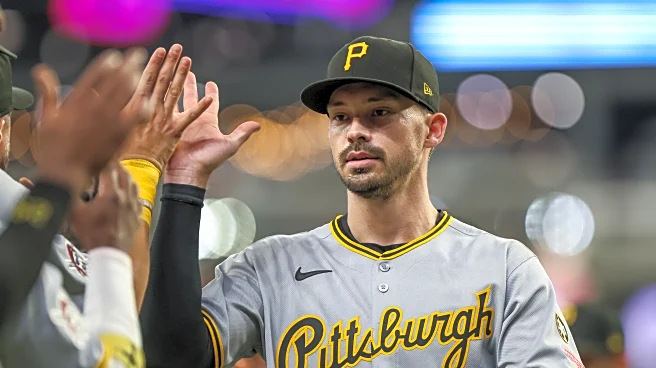What's Happening?
Brad Keller, a right-handed pitcher for the Chicago Cubs, has expressed his interest in returning to the team as he enters free agency. Keller, who had a successful season with the Cubs, is set to hit the open market after signing a one-year, $1.5 million deal before the 2025 season. He posted a 2.07 ERA in 69.2 innings over 68 appearances, striking out 75 batters and achieving a 1.5 bWAR. Keller's transition from an unsuccessful starter with the Kansas City Royals to a productive bullpen role has increased his market value. He has publicly stated his affection for Chicago and the Cubs, indicating a strong desire to continue his career with the team.
Why It's Important?
Keller's potential return to the Cubs is significant for the team's bullpen strength. His performance alongside Daniel Palencia has been a key factor in the Cubs' successful season, which saw them make the playoffs for the first time since 2018. Re-signing Keller could bolster the Cubs' pitching lineup, providing stability and experience. However, MLB teams often hesitate to sign older relievers after one standout season, which could impact Keller's prospects. His expressed interest in staying with the Cubs may influence the team's decision-making process during the free agency period.
What's Next?
As Keller enters free agency, the Cubs will need to decide whether to extend an offer to retain him. The team's management will likely weigh his performance and expressed desire to stay against the typical hesitancy to sign older relievers. Other MLB teams may also show interest in Keller, given his improved performance in a bullpen role. The outcome of these negotiations will shape the Cubs' bullpen strategy for the upcoming season.
Beyond the Headlines
Keller's transition from a starter to a reliever highlights the potential for players to reinvent their careers and find success in new roles. This shift not only benefits individual players but also provides teams with opportunities to optimize their rosters. Keller's case may encourage other players and teams to consider similar transitions, potentially altering traditional approaches to player development and utilization.












